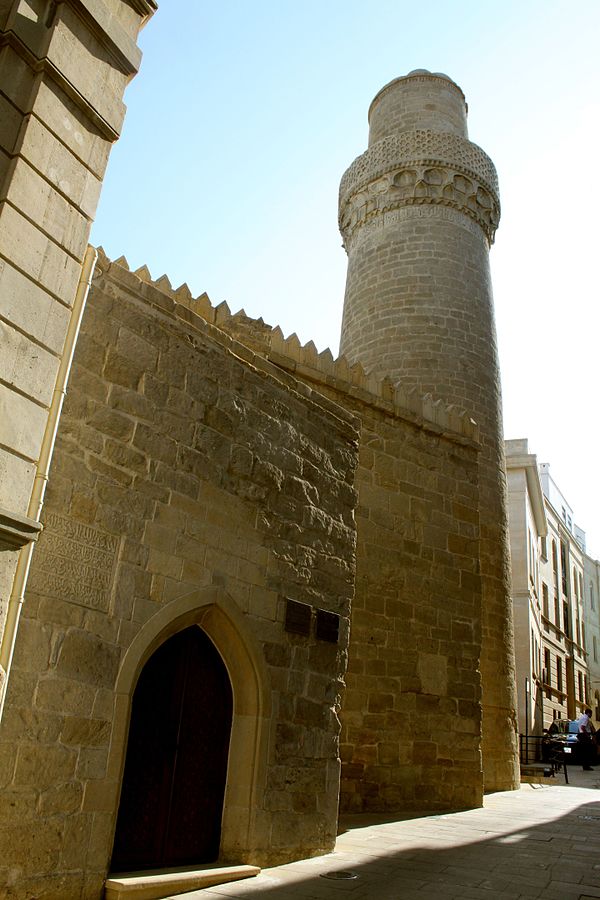Muhammad Mosque
Former mosque in Baku, Azerbaijan From Wikipedia, the free encyclopedia
The Muhammad Mosque or Siniggala Mosque[a] is a former mosque, located in the Old City of Baku, Azerbaijan. The mosque was built in the 11th century.
| Muhammad Mosque Siniggala Mosque | |
|---|---|
 The minaret of the former mosque in 2013 | |
| Religion | |
| Affiliation | Islam (former) |
| Ecclesiastical or organisational status | Mosque (former) |
| Location | |
| Location | Old City, Baku |
| Country | Azerbaijan |
Location of the former mosque in the Baku Old City | |
| Geographic coordinates | 40°21′55″N 49°50′05″E |
| Architecture | |
| Type | Mosque architecture |
| Style | Islamic |
| Completed | AH 471 (1078/1079) |
| Specifications | |
| Minaret(s) | One |
| Inscriptions | One |
| Materials | Stone |
It is the first building in Azerbaijan, which is related to Islam and dated for its architectural ligature.[1]
Architecture
Summarize
Perspective
According to Arabic inscription which was saved in front of the doorway of the northern wall of the mosque, it was built by ustad-rais Muhammad the son of Abu Bakr in 471 of Hijra (1078/79). It means that the architect was not only a master-ustad, but also a rais-head of artificers’ corporation.[1]
Minaret
In 1723, the mosque acquired the name Siniggala, when a military squadron of the Russian Army, consisting of 15 warships and led by Admiral Matyushkin, approached the city from seaside and demanded its surrender during the Russo-Persian War. Russian warships began to bomb the city after the refusal to surrender. One of the Russian shells hit the minaret of Muhammad Mosque and damaged it. A stormy wind then blew the Russian ships further out to sea.[2] The population of the city interpreted the wind as a divine scourge sent to the occupants.[citation needed] From that time until the middle of the 19th century, the minaret of the mosque wasn't reconstructed. It remained a symbol of the persistence and courage of the defendants of the tower.[3][4]
The minaret adjoins the new mosque, which was constructed based on the older one's plan. The trunk of the minaret is strong and slightly thinning. It is constructed from carefully drafted stone. Coarse and flat stalactites of tabling retain sherefe – muezzin’s balcony enclosed by stone plates. A ribbed dome completes the trunk of the minaret. Narrow, winding stairs are winded within the trunk. Ligature with Koranic inscription was traced under the tabling with archaic kufi alphabet.[2]
See also
Notes
References
External links
Wikiwand - on
Seamless Wikipedia browsing. On steroids.

